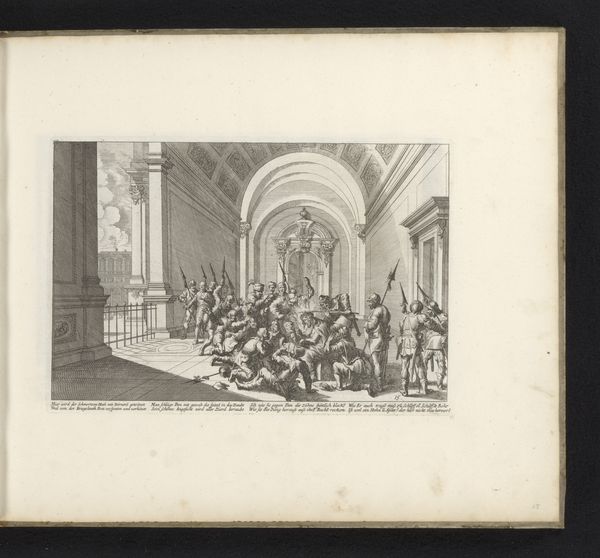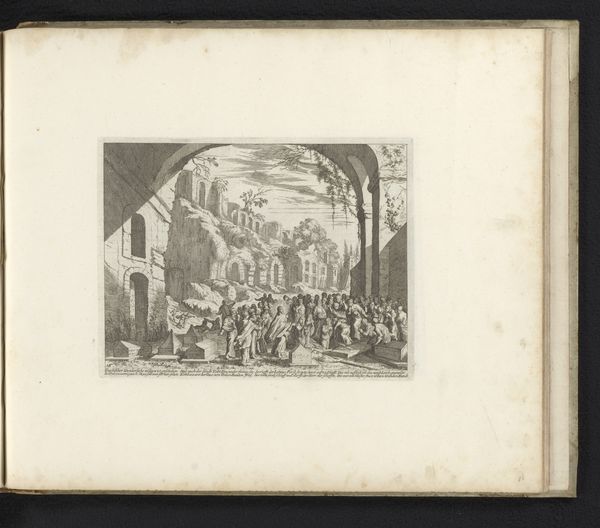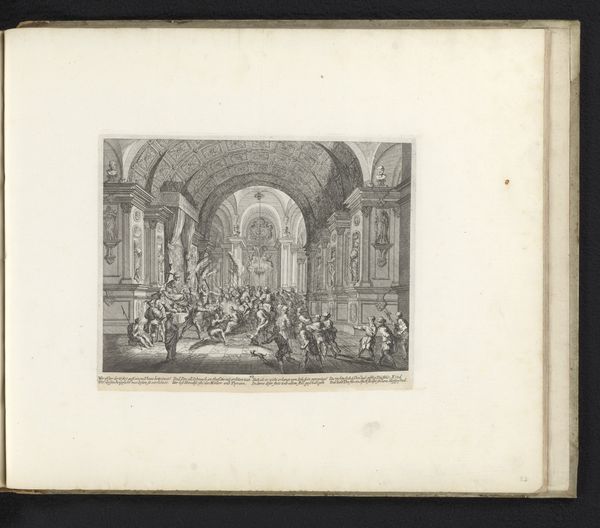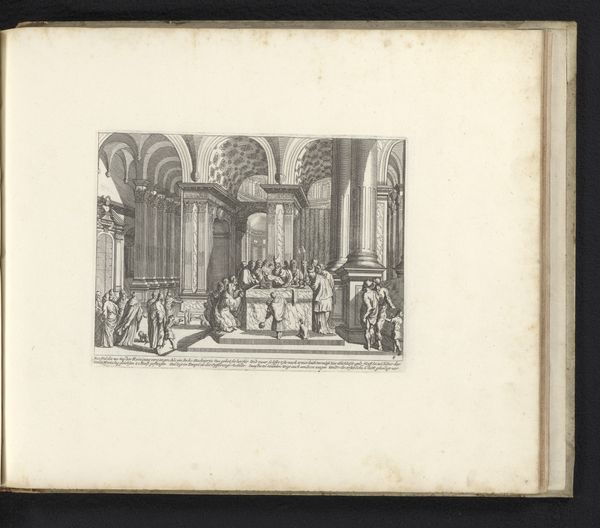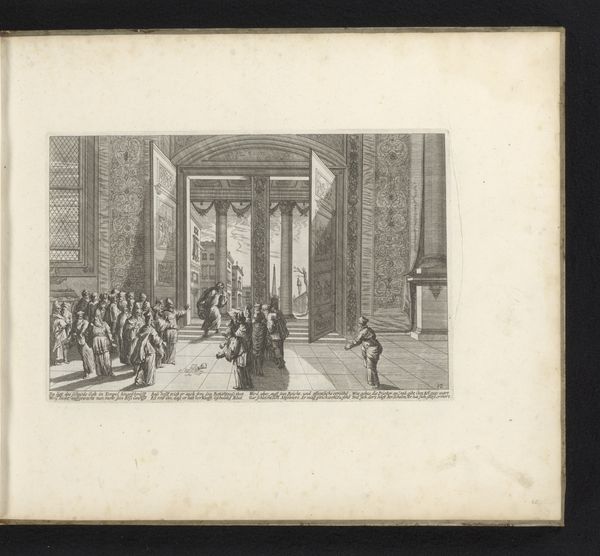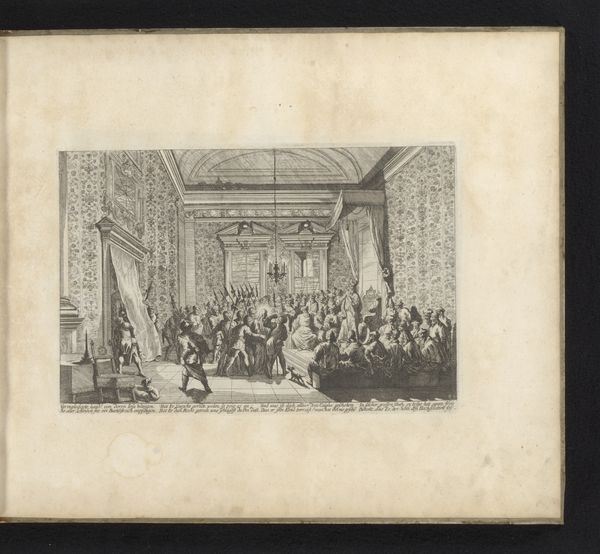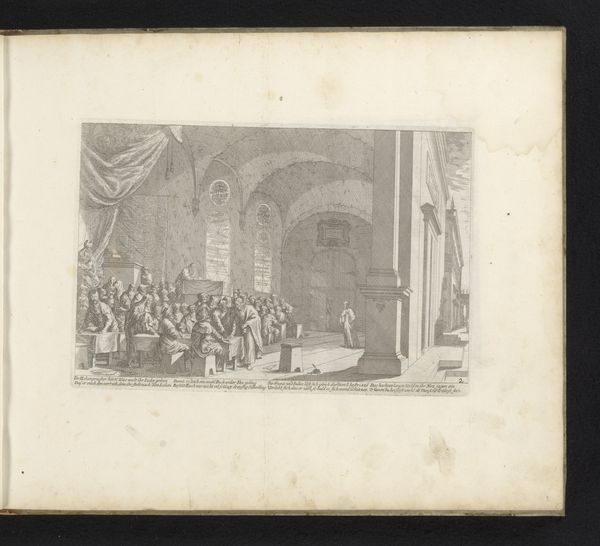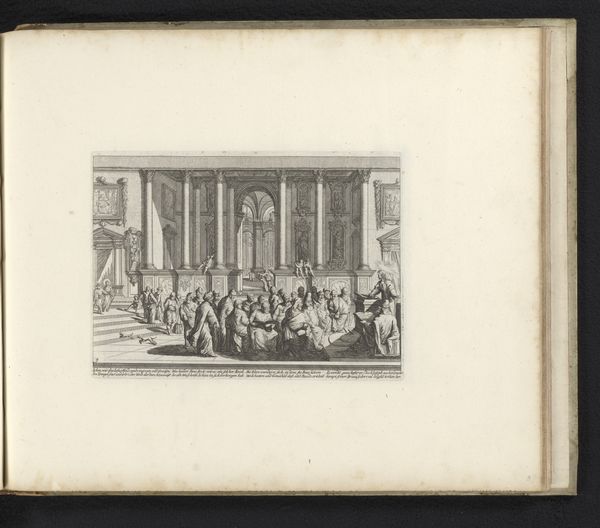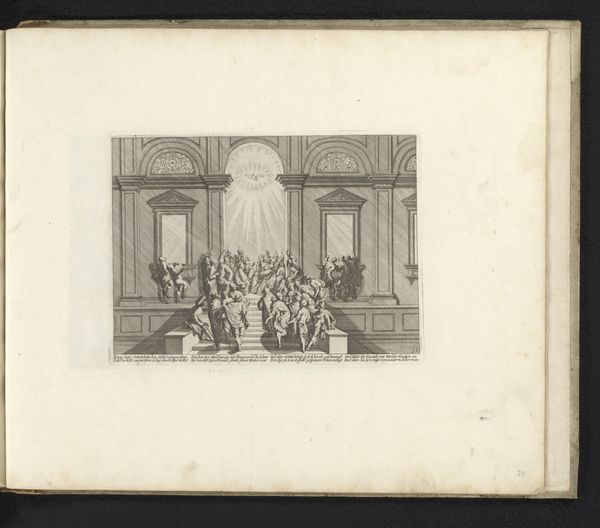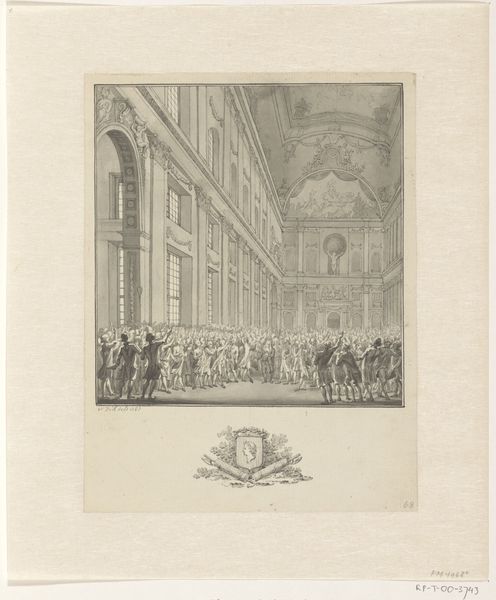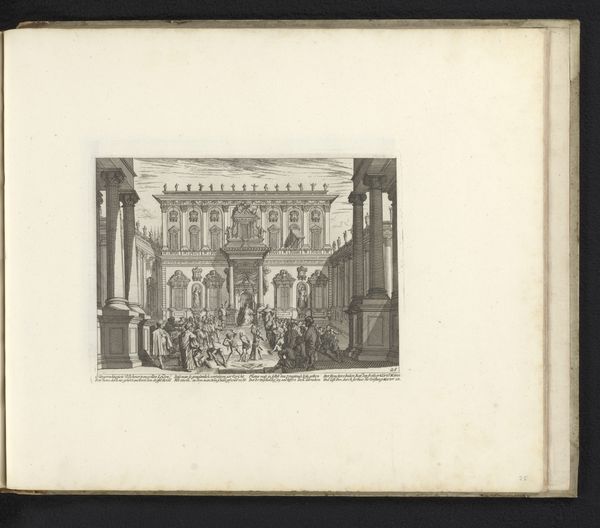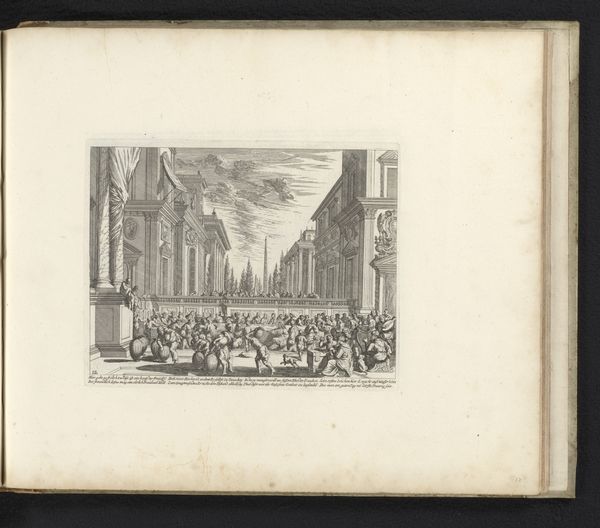
print, engraving
#
baroque
#
pen drawing
# print
#
figuration
#
line
#
genre-painting
#
history-painting
#
academic-art
#
engraving
Dimensions: height 172 mm, width 252 mm
Copyright: Rijks Museum: Open Domain
Editor: This is Melchior Küsel’s "Christus voor Herodes," made sometime between 1670 and 1682. It's an engraving currently held at the Rijksmuseum. The density of the crowd depicted is striking. I’m interested in how the artist uses line to create such a chaotic scene. What are your thoughts? Curator: For me, the crucial aspect is to analyze the print as a material object shaped by specific production methods. Consider the role of the engraver – Küsel – as a skilled artisan, reproducing an image likely conceived by another. It wasn't "high art" necessarily, but commercial craft produced for a growing market of printed images. How does this process impact the way we view the biblical subject matter? Editor: So, it's less about artistic expression and more about the labor involved in reproducing an image for consumption? Curator: Precisely! Look closely at the details: the intricate patterns on the walls, the depiction of fabric. These are not merely artistic choices; they reflect the engraver's skill in replicating textures, potentially showcasing the luxury goods accessible to a burgeoning middle class. Was this print, therefore, more about depicting social status through material culture than religious piety? Editor: That's fascinating. So the print functions as both a religious depiction and a display of the material world through skilled labor? Curator: Yes, challenging traditional distinctions. And remember, prints were often hand-colored. Who did that labor? What pigments were used, and where did they come from? Considering the means of production forces us to rethink the meaning of the artwork. Editor: That opens up so many questions I hadn't considered! Looking at art from the perspective of its material creation reveals such a richer historical narrative. Curator: Indeed. The hand that held the burin holds history itself.
Comments
No comments
Be the first to comment and join the conversation on the ultimate creative platform.
